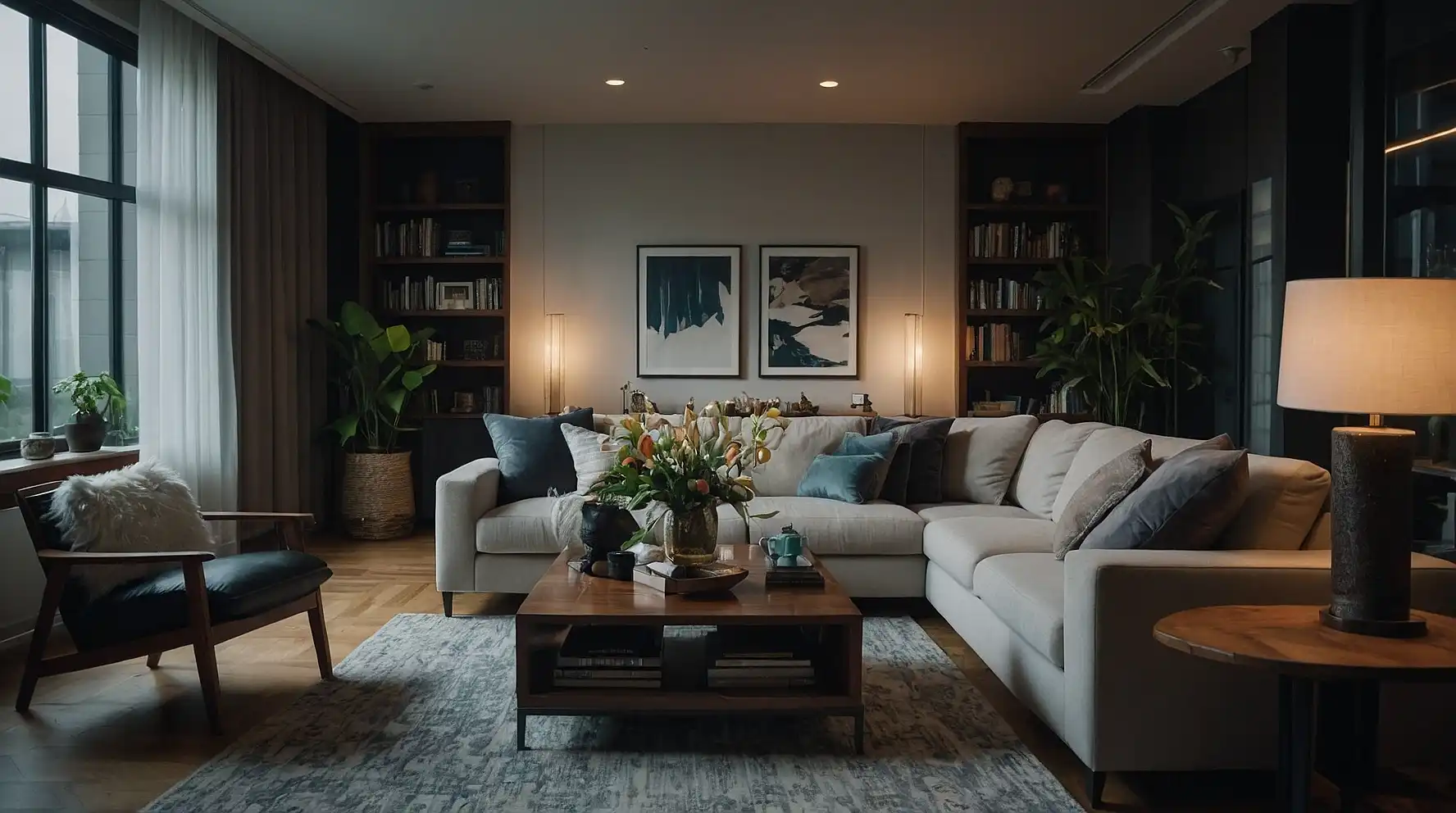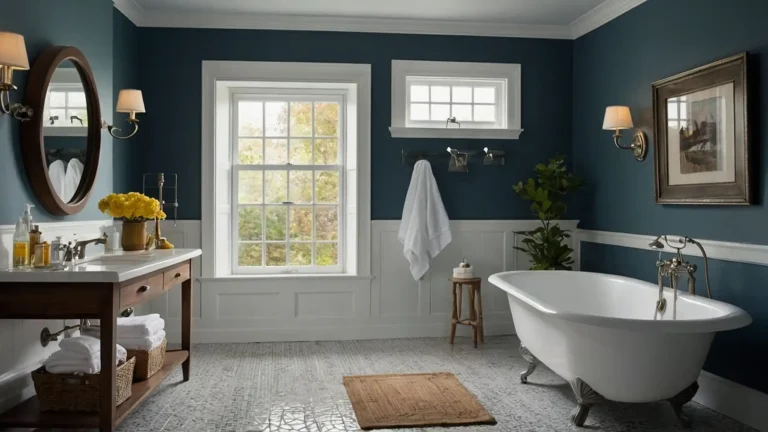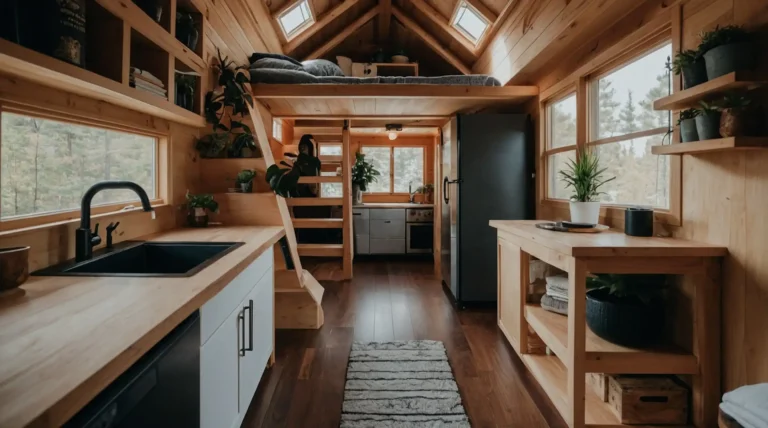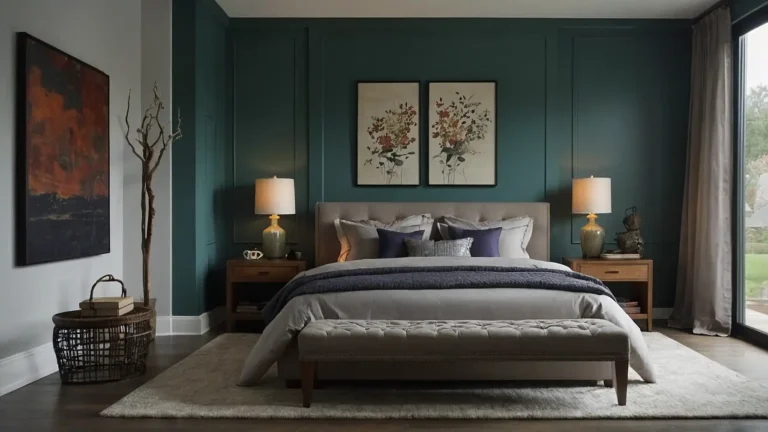27 Small Living Room Ideas
Maximizing a small living room requires smart strategies that make every square foot count.
You can create a spacious, stylish room using clever design tricks and multi-functional furniture choices.
These practical ideas prove that size doesn’t limit style or comfort.
From strategic color choices to innovative storage solutions, you’ll discover ways to transform cramped quarters into inviting spaces.
Your small living room can feel open, organized, and perfectly proportioned. These design strategies help you achieve big impact in compact spaces.
1: Light Color Palette

Choose light, neutral colors for walls and major furniture pieces to create an airy, expansive feeling.
Whites, creams, and pale grays reflect natural light and make rooms appear significantly larger.
Paint walls and ceiling the same light color to blur boundaries. Add personality through colorful accessories and artwork.
This monochromatic approach eliminates visual breaks that make spaces feel choppy.
Light backgrounds provide the perfect canvas for bold accent pieces that won’t overwhelm your compact space.
2: Large Statement Mirror
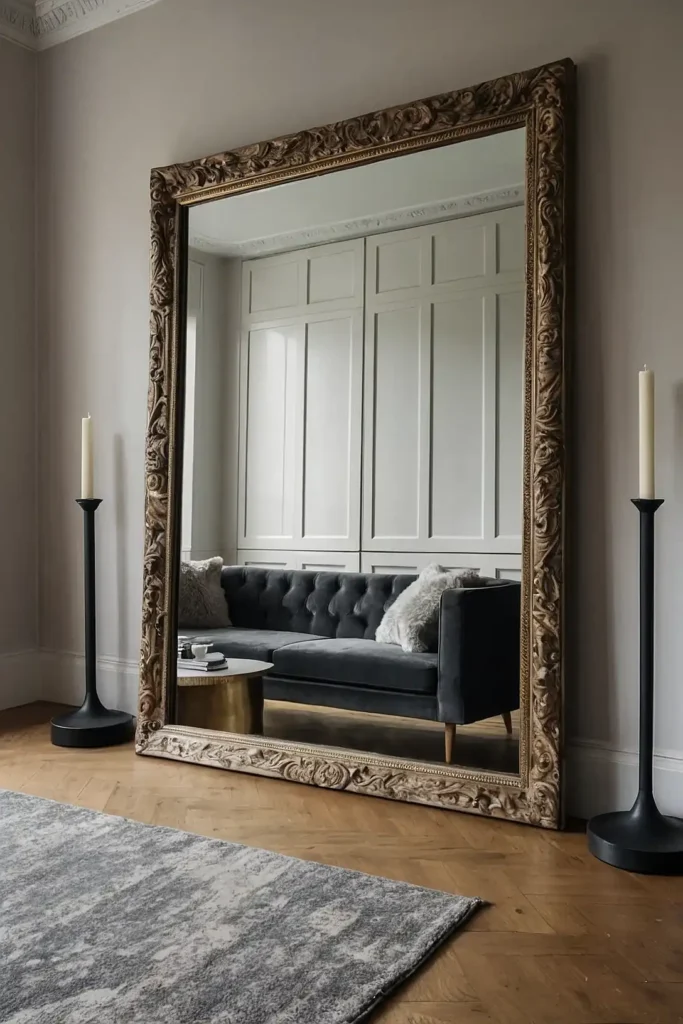
Install one oversized mirror on a focal wall to instantly double the visual space of your living room.
Position mirrors opposite windows to maximize natural light reflection. Choose decorative frames that complement your style for functional art.
The bounced light brightens dark corners and makes the entire room feel more spacious. Mirrors reflect light and create the illusion of depth and openness.
This single investment creates dramatic impact while solving multiple design challenges in small spaces.
3: Multi-Functional Ottoman

Select an ottoman that serves as extra seating, coffee table, and hidden storage simultaneously.
These versatile pieces maximize functionality without cluttering your limited floor space.
Choose upholstered tops for comfortable seating during gatherings. The soft surface works perfectly for resting feet or holding drinks and snacks.
Store blankets, games, or seasonal items inside for organized living.
This triple-duty furniture piece eliminates the need for multiple separate items in your compact room.
4: Vertical Storage Solutions
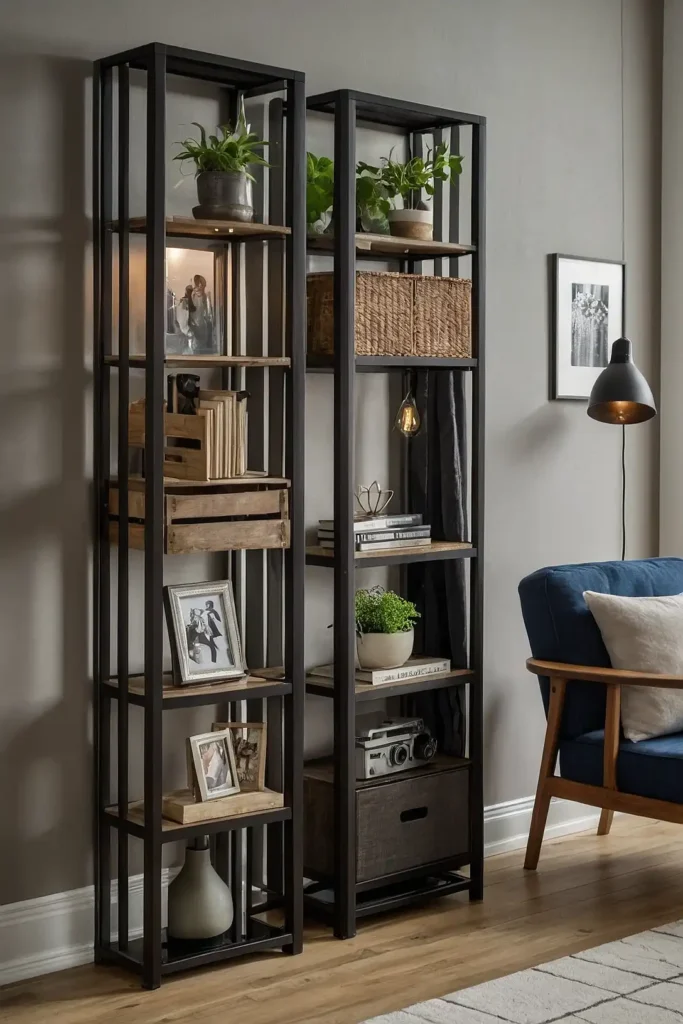
Install tall bookcases and floating shelves that draw the eye upward and utilize often-wasted vertical space. Height creates the illusion of larger room proportions.
Place shelves near the ceiling to store items you don’t need daily. The vertical lines make walls appear taller while providing essential storage capacity.
Display books, plants, and decorative objects at eye level for visual interest.
This approach keeps floors clear while showcasing your personality through carefully curated collections.
5: Sectional Sofa Configuration
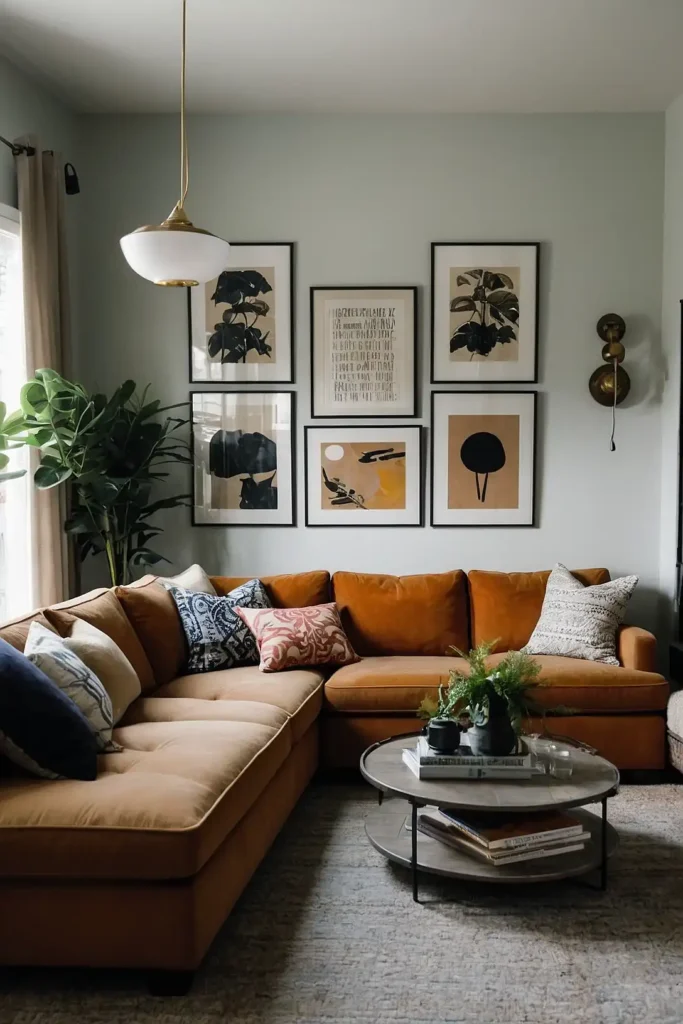
Choose a compact sectional that defines your seating area while providing maximum seating in minimal space.
L-shaped configurations work particularly well in small rooms. Select pieces with exposed legs to maintain visual lightness underneath.
Push the sectional against walls to open up central floor space. This arrangement creates clear pathways while maximizing available seating for family and guests.
The visible floor area beneath furniture makes rooms appear less cluttered and more spacious.
6: Glass Coffee Table

Replace bulky wooden coffee tables with clear glass or acrylic alternatives that provide surface area without visual weight.
Transparent furniture maintains open sightlines throughout your room. Add storage underneath with decorative baskets or books for functionality.
Choose tables with minimal frames for maximum transparency effect. The less visible structure, the more your room maintains its open, airy feeling.
The glass surface allows you to showcase beautiful items while keeping practical storage accessible.
7: Wall-Mounted TV
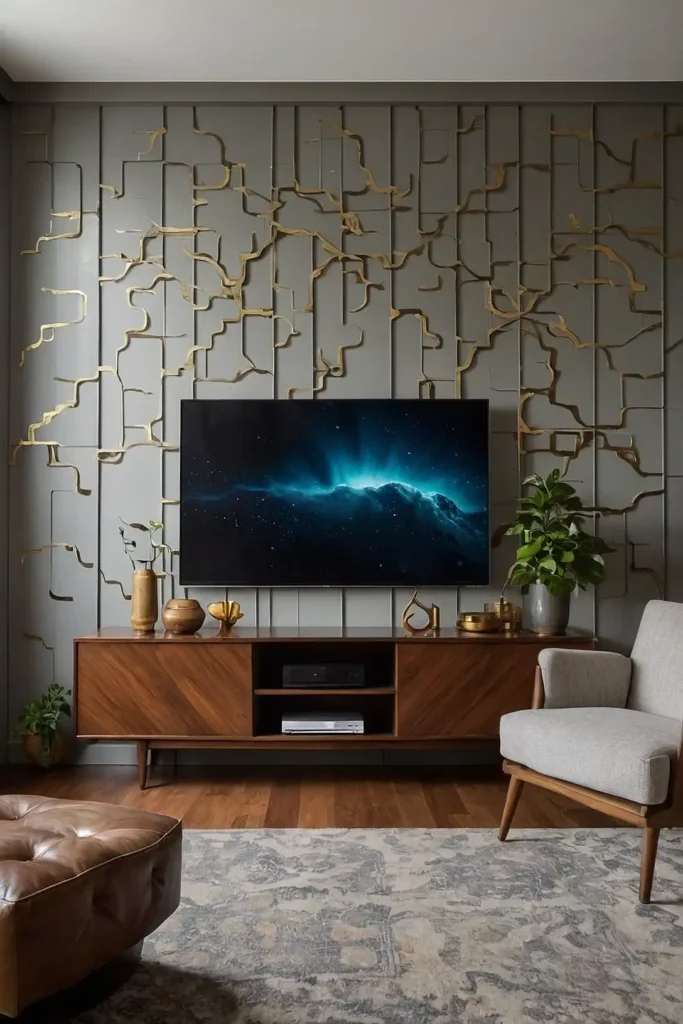
Mount your television on the wall to free up valuable floor space and create a cleaner, more streamlined appearance.
This solution eliminates bulky entertainment centers entirely. Add floating shelves below for media components and decorative display.
Hide cables behind cord covers or within walls for professional installation. Clean lines contribute to the uncluttered aesthetic essential for small space success.
This approach provides necessary storage while maintaining the sleek, space-saving wall mount benefits.
8: Floor-to-Ceiling Curtains

Hang curtains from ceiling to floor rather than just around window frames to create the illusion of larger windows and taller walls.
This simple trick adds dramatic height. Extend curtain rods beyond window frames to make windows appear wider.
Choose light-colored fabrics that allow natural light to filter through gently. Heavy, dark curtains can overwhelm small spaces and block precious natural illumination.
This optical illusion adds perceived square footage without any actual construction or renovation.
9: Nested Side Tables
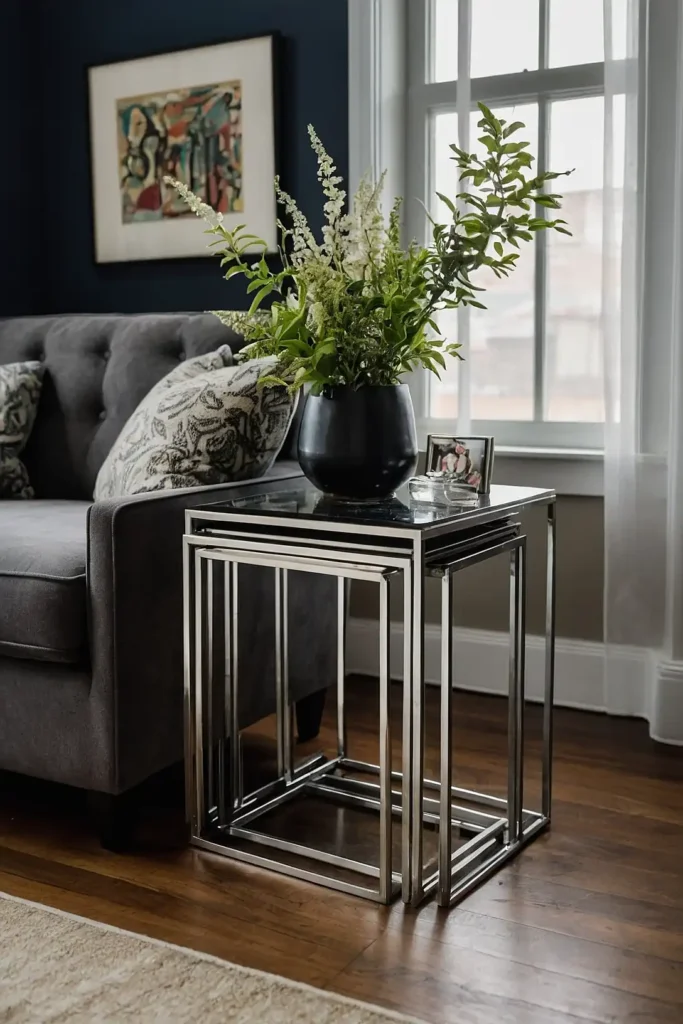
Use nesting tables that tuck under each other when not needed for flexible surface space. Choose coordinating designs that look intentional when separated or together.
These space-saving pieces provide extra surfaces during entertaining while disappearing when unnecessary.
Pull out additional tables only when hosting guests or needing extra surface area. The flexibility allows your room to adapt to different activities and group sizes.
This furniture strategy maximizes function while minimizing the permanent footprint in your compact living area.
10: Built-In Seating
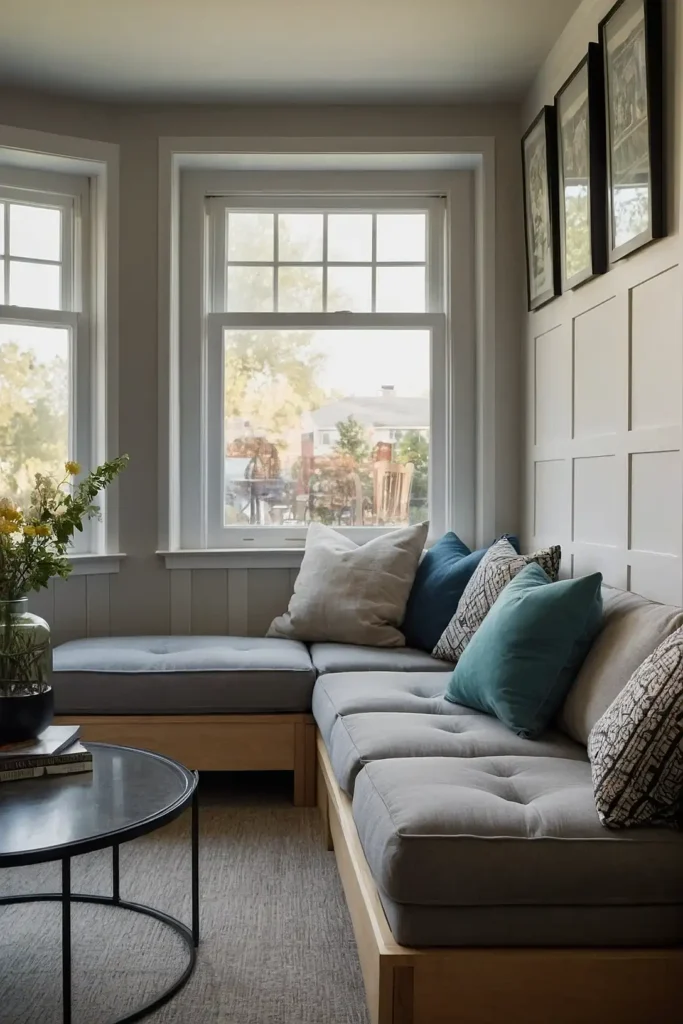
Create custom built-in benches along walls or under windows for space-efficient seating that doesn’t intrude into your room’s central area.
This approach maximizes every available inch. Add storage compartments underneath bench seats for hidden organization.
The dual purpose eliminates need for separate storage furniture while providing essential seating capacity.
Top with comfortable cushions that tie into your color scheme. Built-ins feel intentional and custom while providing practical solutions for small space living challenges.
11: Monochromatic Scheme
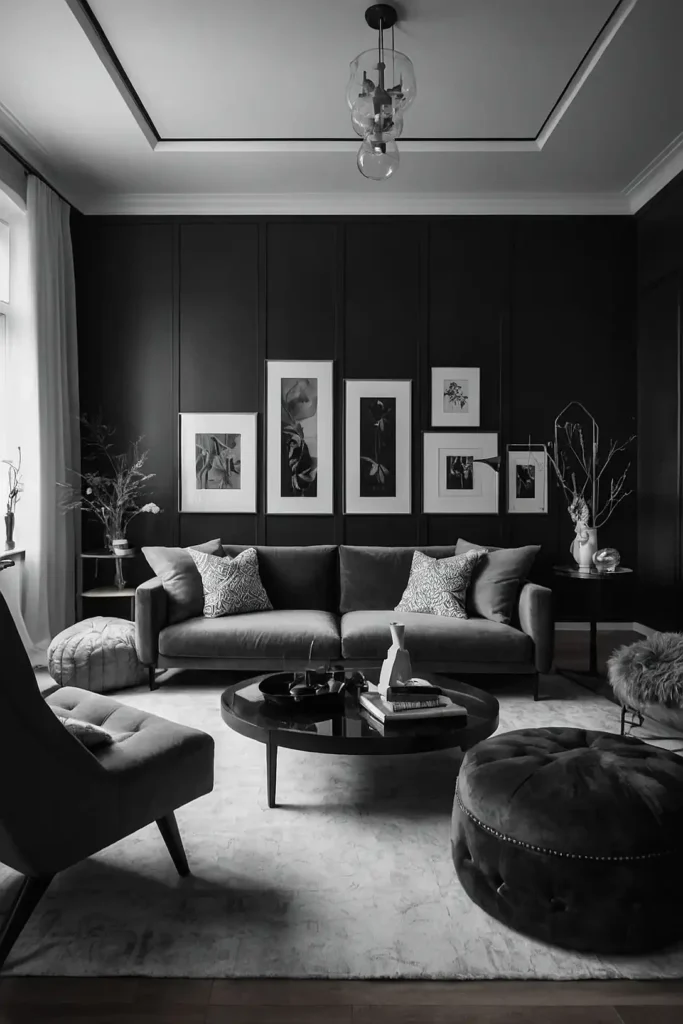
Design your room using various shades of the same color to create visual continuity that makes spaces appear larger and more sophisticated.
Monochromatic palettes eliminate jarring contrasts. Layer different textures within your chosen color family for depth and interest.
Varying materials prevent monotony while maintaining the cohesive flow essential for small spaces.
Add metallic accents for subtle contrast without breaking the color harmony.
These touches provide sparkle and sophistication while supporting your space-expanding monochromatic foundation.
12: Floating Furniture
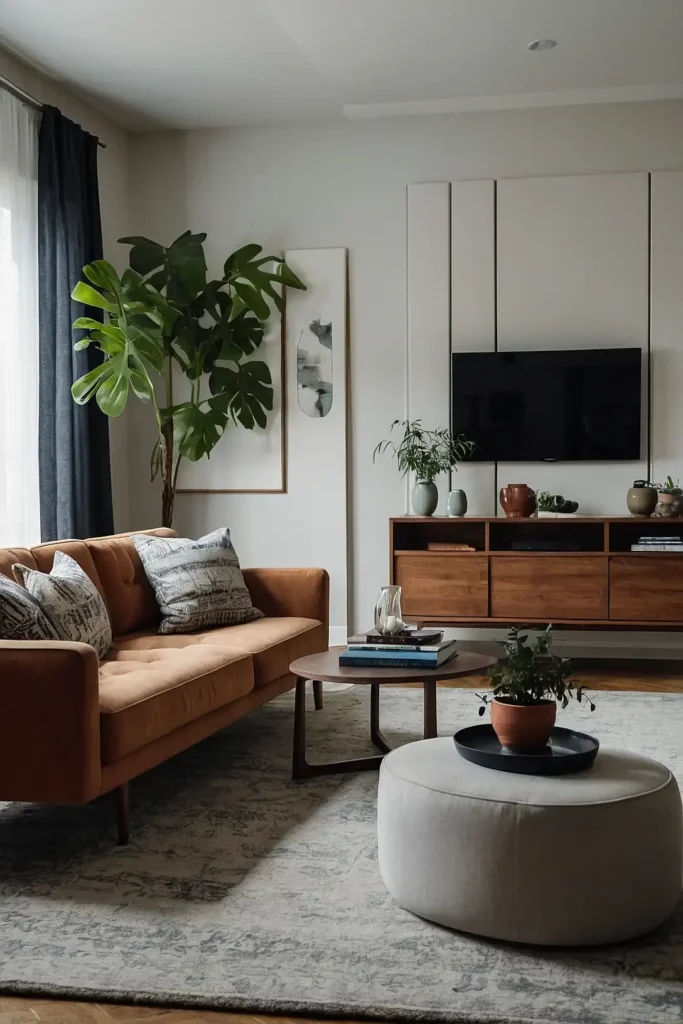
Choose furniture with visible legs rather than pieces that sit directly on the floor to maintain visual flow underneath. This creates the illusion of more floor space.
Avoid heavy, grounded furniture that makes rooms feel cramped and cluttered. Light, airy pieces contribute to the open feeling you want to achieve in compact areas.
Select pieces in proportion to your room size for balanced compositions.
Oversized furniture overwhelms small spaces, while appropriately scaled pieces enhance comfort and visual harmony.
13: Corner Utilization
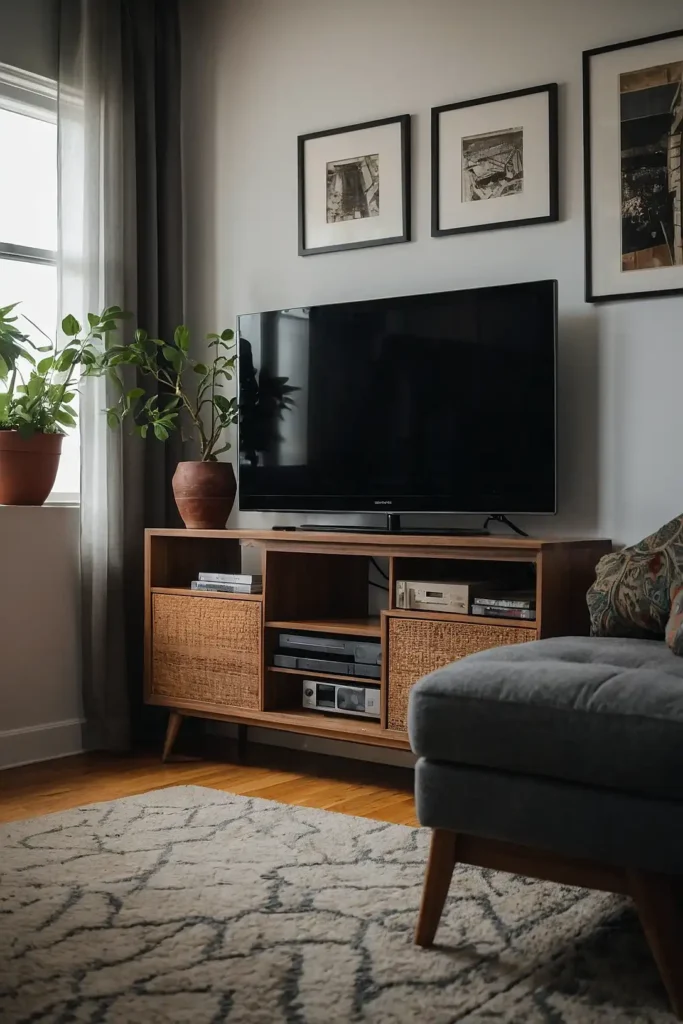
Transform awkward corners into functional spaces using corner shelves, plants, or reading nooks that would otherwise remain empty and unused.
Every square foot matters in small rooms. Install corner floating shelves for display and storage without floor intrusion.
These often-overlooked spaces provide valuable real estate for books, plants, or decorative objects.
Create cozy reading corners with comfortable chairs and good lighting.
Corners offer intimate spaces within larger rooms while maximizing your available living area effectively.
14: Striped Patterns
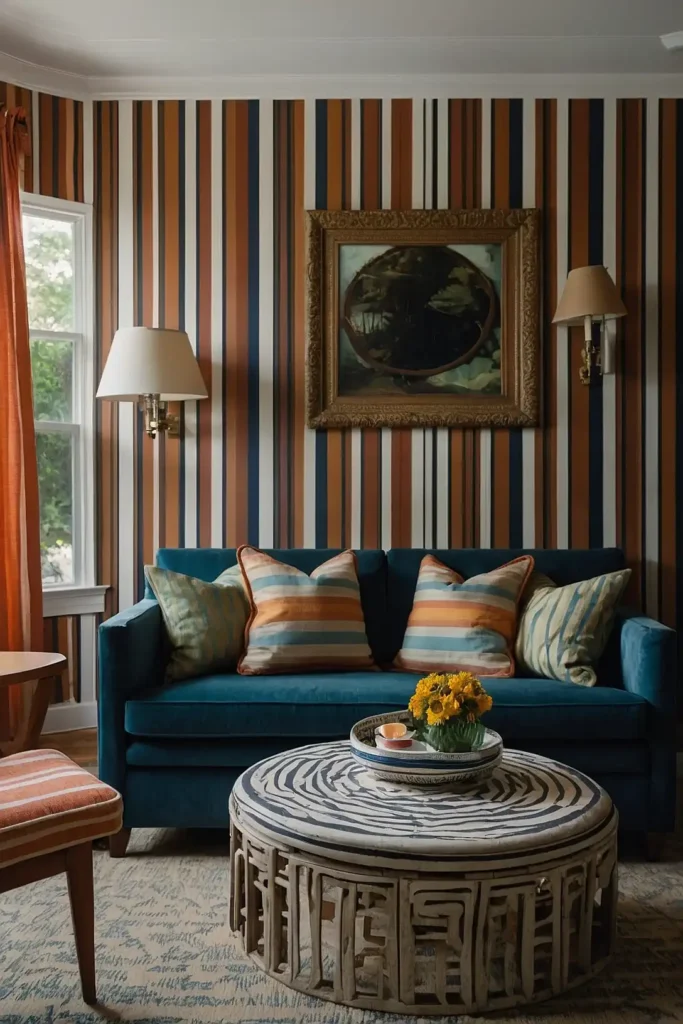
Incorporate horizontal stripes in rugs, pillows, or wall treatments to make rooms appear wider than their actual dimensions.
Strategic pattern placement creates powerful optical illusions. Keep stripe width proportional to room size for best visual impact.
Use vertical stripes on walls or curtains to add perceived height. The directional lines guide the eye and create the impression of larger proportions.
Thin stripes work better in very small spaces, while wider stripes suit slightly larger compact rooms.
15: Dual-Purpose Furniture
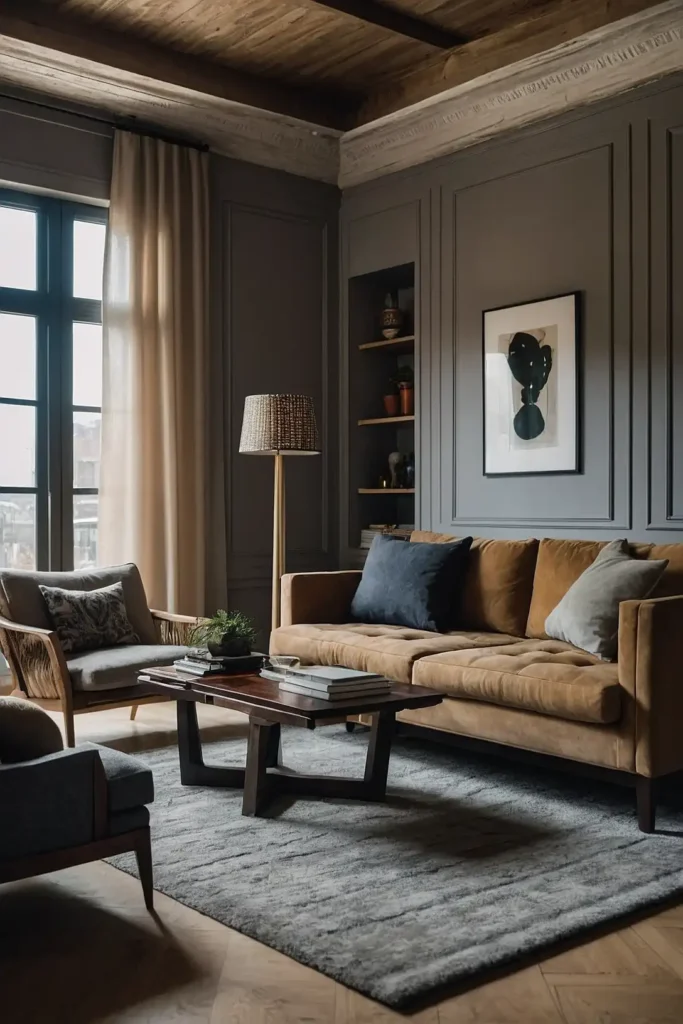
Select pieces that serve multiple functions, like storage benches, console tables with shelving, or coffee tables with drawers.
Every piece should earn its place through multiple uses. Invest in quality pieces that handle multiple functions well rather than cheap items.
Choose dining tables that double as work surfaces during the day. Flexible furniture adapts to your changing needs throughout different times and activities.
Durable, well-designed multi-purpose furniture provides better long-term value and performance in small spaces.
16: Strategic Lighting
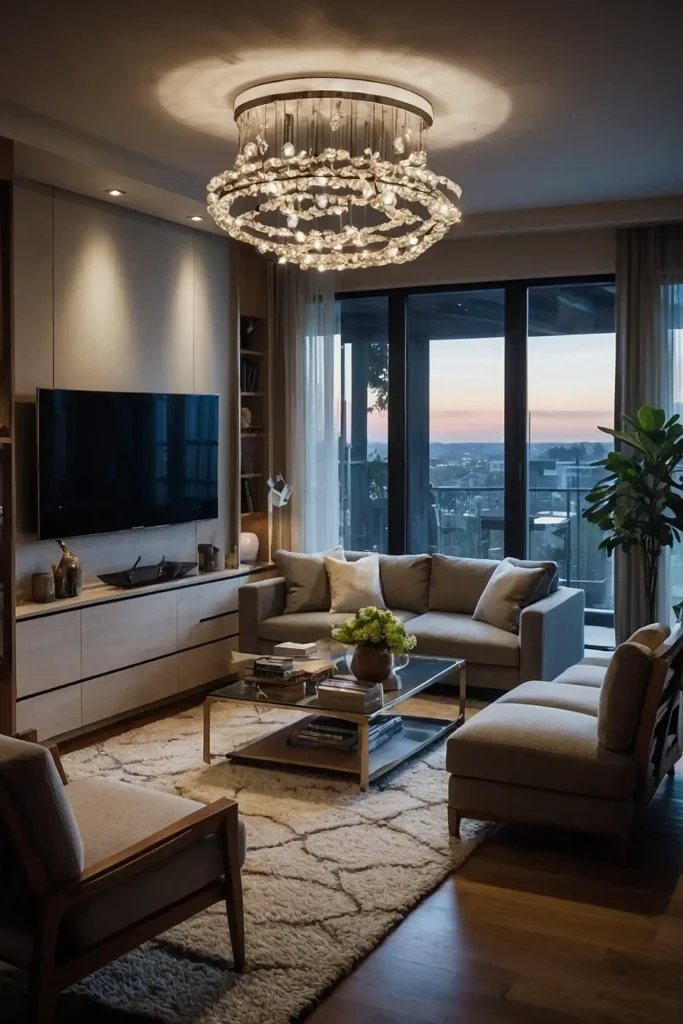
Layer multiple light sources at different heights to eliminate harsh shadows and create ambient illumination that makes rooms feel larger and more welcoming.
Good lighting transforms spaces. Use table lamps, floor lamps, and overhead fixtures for comprehensive coverage.
Multiple sources provide flexibility for different activities while enhancing your room’s overall atmosphere.
Choose warm-toned bulbs that create cozy, inviting environments.
Cold lighting can make small spaces feel harsh and unwelcoming, while warm light enhances comfort and spaciousness.
17: Open Shelving Display

Replace closed cabinets with open shelving that showcases beautiful objects while providing necessary storage.
Open displays create visual interest without the bulk of solid furniture. Arrange items in odd-numbered groupings for pleasing visual compositions.
The styling turns functional storage into decorative displays that enhance rather than clutter your space.
Mix books, plants, and decorative objects for dynamic, lived-in appeal.
Varied heights and textures create visual interest while maintaining the organized appearance essential for small spaces.
18: Scale-Appropriate Rugs

Choose rugs large enough to anchor your seating area with front furniture legs sitting on the rug surface.
Properly sized rugs make rooms appear larger and more cohesive. Select patterns and colors that complement rather than compete with other room elements.
Avoid tiny rugs that float in the middle of rooms without connecting to furniture. Small rugs can make spaces feel fragmented and actually smaller than they are.
The rug should enhance your overall design while defining your living space boundaries clearly.
19: Minimal Window Treatments

Use simple window treatments that don’t overwhelm your windows or compete for visual attention.
Clean, unadorned windows maximize natural light and maintain open feelings. Choose treatments that mount close to glass rather than projecting into rooms.
Minimal hardware keeps window areas clean and uncluttered while providing necessary privacy and light control.
Select light-filtering options that provide privacy without blocking precious natural illumination.
Natural light makes small spaces feel more open and welcoming throughout the day.
20: Artwork Groupings
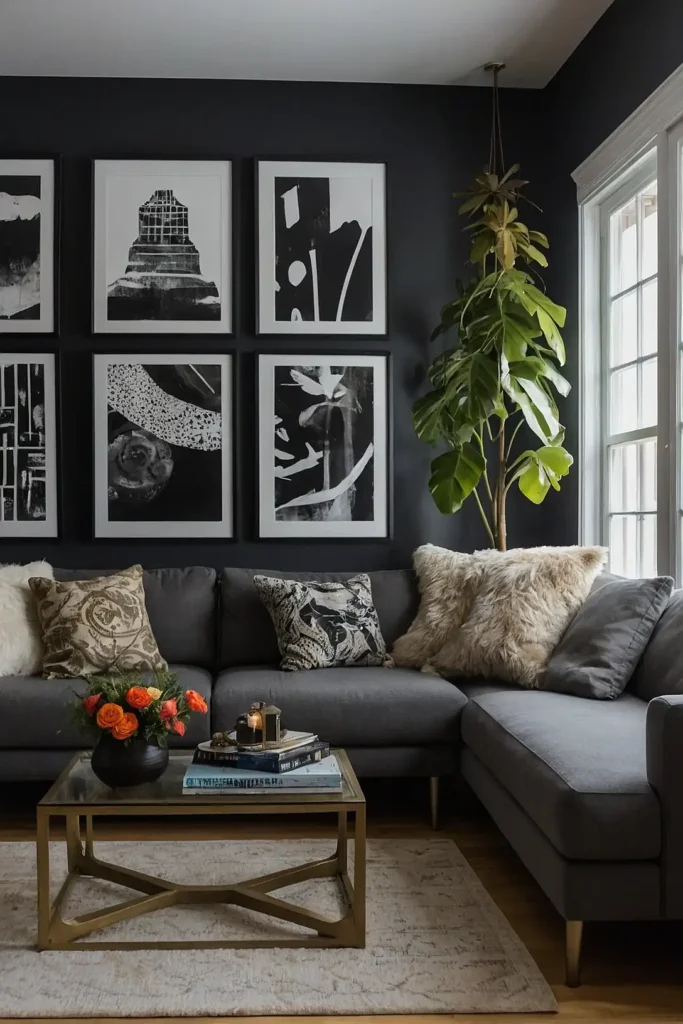
Create gallery walls with multiple smaller pieces rather than one large artwork to add visual interest without overwhelming compact walls.
Groupings provide impact through collective presence. Hang artwork at eye level for proper viewing and room proportion.
Correct placement makes ceilings appear higher while maintaining comfortable viewing angles for daily enjoyment.
Choose pieces that share common elements like color or theme for cohesive displays.
Unified groupings provide sophisticated visual impact while reflecting your personal style and interests.
21: Furniture Legs Exposure
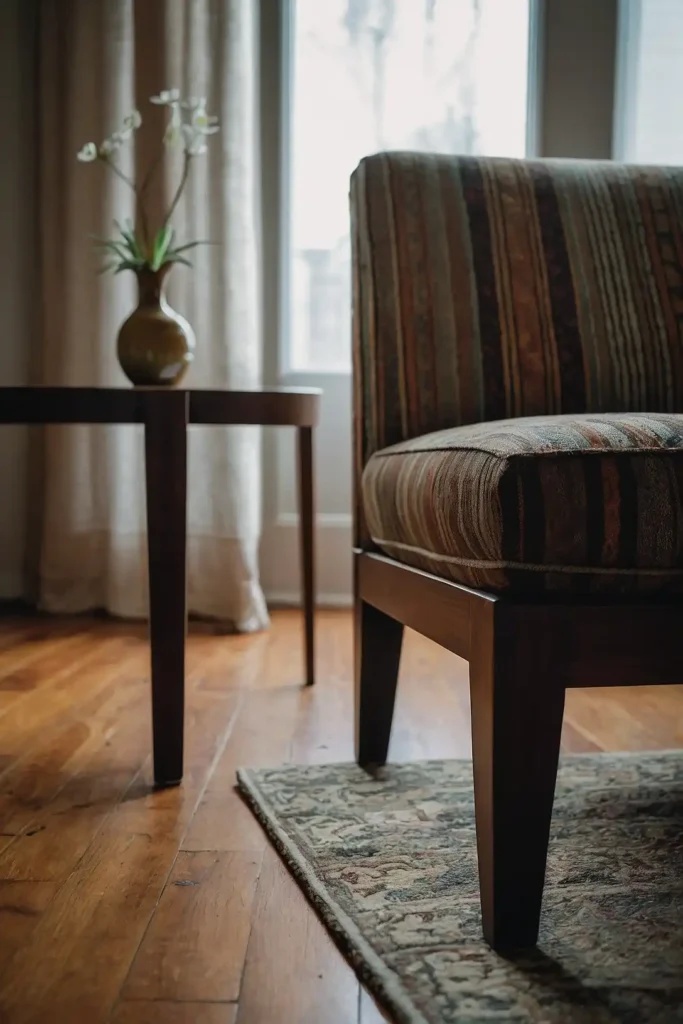
Select furniture pieces with exposed legs rather than solid bases to maintain visual flow and create the impression of more floor space underneath furniture.
Avoid furniture that sits directly on floors or has solid skirts hiding the base. Heavy, grounded pieces make small rooms feel more cramped and cluttered than necessary.
Choose consistent leg styles throughout the room for unified design approach.
Coordinated furniture creates intentional, pulled-together appearances that enhance your small space’s overall sophistication.
22: Pocket Doors

Install pocket doors that slide into walls rather than swinging doors that require clearance space.
This simple change reclaims valuable square footage in compact living areas. Remove unnecessary interior doors entirely where privacy isn’t essential for open flow.
Eliminated barriers make spaces feel larger and improve natural light circulation throughout your home.
Consider barn doors or sliding panels for style and space efficiency.
These alternatives provide separation when needed while maintaining the open feeling essential for small space comfort.
23: Furniture Multitasking
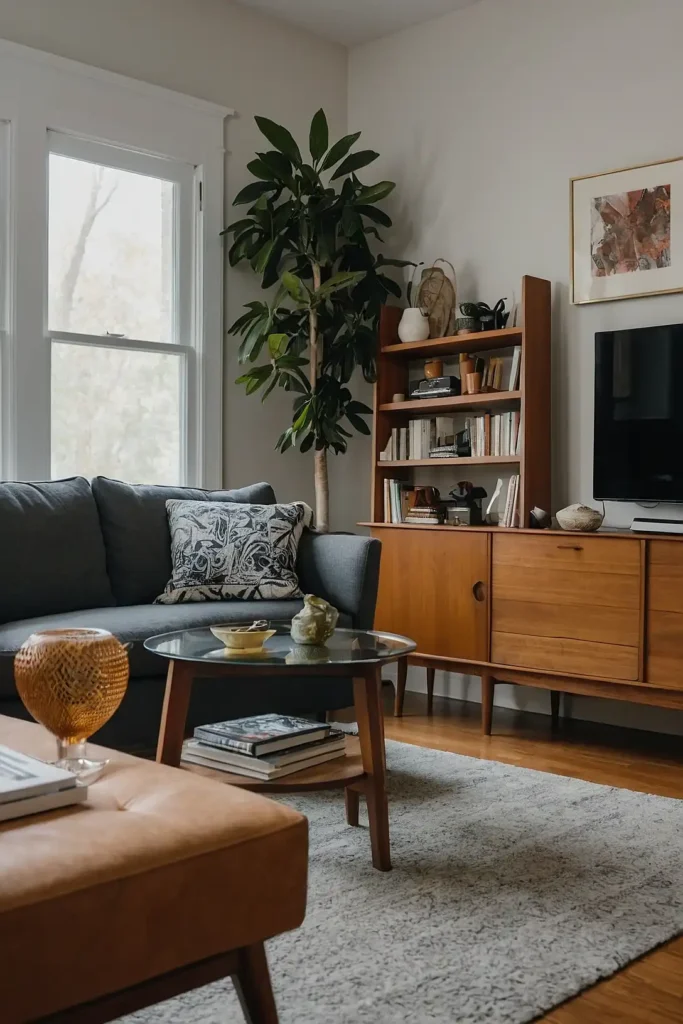
Choose pieces that serve multiple purposes, like console tables behind sofas that provide surfaces and storage, or benches that offer seating and organization simultaneously.
Select dining tables that work as desks during the day for flexible living.
Adaptable furniture maximizes your investment while accommodating various activities in limited square footage.
Invest in quality pieces designed for multiple uses rather than single-purpose items.
Well-made multifunctional furniture provides better long-term value and performance in challenging small spaces.
24: Vertical Garden
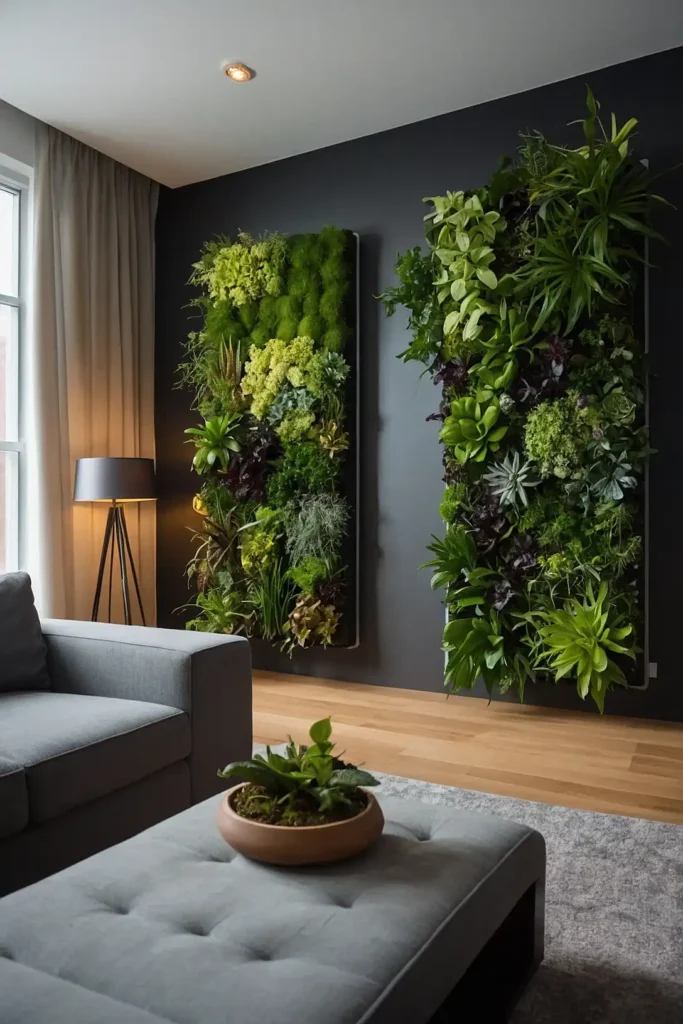
Create living walls or tall plant stands that add natural beauty without consuming precious floor space.
Vertical gardens bring life and color while maximizing growing area. Choose plants that thrive in your lighting conditions for successful indoor gardens.
Healthy, thriving plants enhance your space’s beauty and air quality without maintenance headaches.
Use wall-mounted planters or tall plant stands for space-efficient greenery.
These solutions provide natural beauty while keeping floor areas clear for furniture and foot traffic.
25: Hidden Storage

Incorporate storage solutions that blend seamlessly with your decor, like storage ottomans, hollow side tables, or decorative baskets that organize while enhancing your room’s style.
Choose furniture with built-in storage compartments for toys, blankets, or seasonal items.
Hidden organization maintains clean appearances while providing essential storage capacity in compact areas.
Use decorative boxes and baskets that serve dual purposes as storage and display.
These attractive organizers keep necessities accessible while contributing to your room’s overall aesthetic appeal.
26: Ceiling Paint

Paint your ceiling a shade lighter than walls to create the illusion of height and openness. This simple color trick makes rooms feel more spacious and airy.
Consider painting ceilings white regardless of wall color for maximum height illusion. Use semi-gloss or satin finishes that reflect more light than flat paint.
White reflects light effectively while creating the perception of endless upward space above your head.
The subtle sheen enhances the light-reflecting properties while maintaining sophisticated, finished appearances throughout your space.
27: Flexible Seating
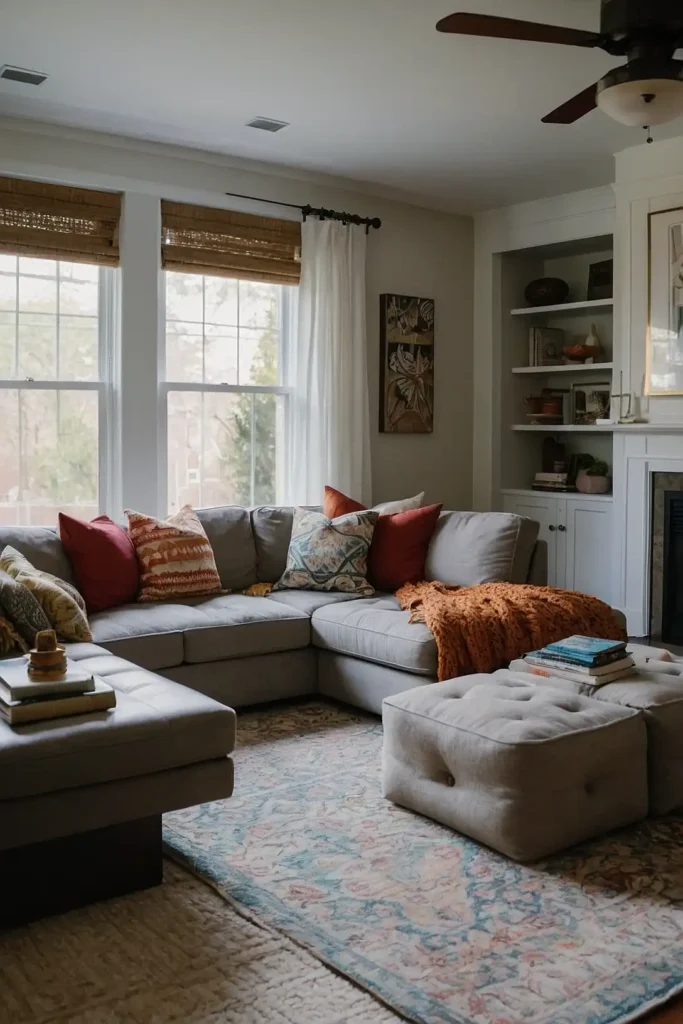
Provide various seating options like floor cushions, folding chairs, or stools that store away when not needed.
Flexible seating accommodates guests without permanent space commitment. Select coordinating pieces that look intentional whether stored or in use.
Choose lightweight pieces that move easily for different configurations and activities.
Adaptable seating allows your room to transform for various uses and group sizes throughout the week.
Cohesive flexible seating maintains your room’s design integrity while providing practical solutions for entertaining and daily living.
Conclusion
Small living rooms require smart strategies but can achieve big style and comfort. These ideas prove that thoughtful design maximizes every square foot beautifully.

